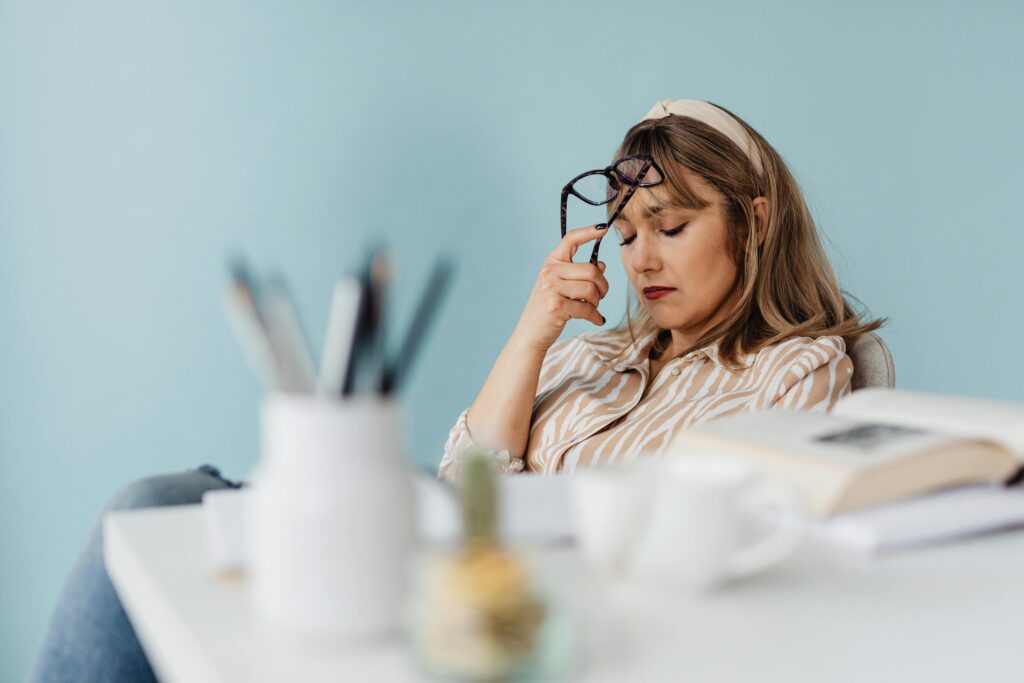Numerous epidemiological studies show that women are twice as likely as men to be diagnosed with an anxiety disorder over their lifetime. These disorders include generalized anxiety disorder (GAD), panic disorder, social anxiety disorder, specific phobias, post-traumatic stress disorder (PTSD), and obsessive-compulsive disorder (OCD).
According to the National Institute of Mental Health (NIMH), nearly 23.4% of women in the U.S. experience an anxiety disorder annually compared to about 14.3% of men. This gender gap is consistent across different cultures, age groups, and types of anxiety disorders.
Why Are Women More Prone to Anxiety Disorders?

The higher prevalence of anxiety in women is believed to result from an interplay of biological, psychological, and sociocultural factors.
Biological Factors
Biological factors contribute significantly to the increased vulnerability of women to anxiety disorders. One major aspect is hormonal fluctuations that occur throughout a woman’s life during menstruation, pregnancy, postpartum, and menopause. These hormonal shifts, especially in estrogen and progesterone, have a profound impact on brain chemistry and emotional regulation. Estrogen, in particular, influences the function of serotonin and other neurotransmitters that are essential for maintaining mood stability and managing anxiety.
Conditions like premenstrual syndrome (PMS) and premenstrual dysphoric disorder (PMDD) are linked to heightened anxiety symptoms, illustrating how cyclical hormone changes can trigger emotional disturbances. Similarly, the postpartum period often involves a dramatic drop in reproductive hormones, which can result in postpartum anxiety, a common but frequently overlooked condition.
In addition to hormonal factors, differences in brain structure and chemistry also play a role. Neuroimaging research reveals distinct variations in key brain regions between men and women, including the amygdala, hippocampus, and prefrontal cortex—areas heavily involved in processing emotion and memory. Women tend to show increased amygdala activity, which is linked to greater emotional reactivity. They also exhibit stronger connectivity between emotional and memory-related regions, which may intensify anxiety-related thought patterns and lead to a more sustained experience of anxious emotions. These neurological and hormonal distinctions help explain why women are biologically more susceptible to anxiety disorders.
Psychological Factors
Psychological and sociocultural factors play a significant role in the heightened prevalence of anxiety disorders among women. One major psychological factor is coping style. Women are more inclined to engage in rumination, a repetitive and passive focus on distress and its potential causes. In contrast, men are more likely to use distraction or externalization as coping mechanisms. Rumination is strongly associated with the development and persistence of anxiety, making it a critical factor in understanding gender differences in mental health.
Another key psychological contributor is trauma and PTSD. Women are at a higher risk of experiencing sexual and interpersonal trauma, including domestic violence and childhood abuse. While men can also be affected by trauma, women are statistically more likely to develop post-traumatic stress disorder (PTSD) afterward. This heightened susceptibility may be due to a combination of biological sensitivity and the influence of social conditioning that discourages open processing of trauma.
Additionally, comorbid mental health disorders are more common in women. Conditions like depression often occur alongside anxiety and can intensify its effects. The interplay between these disorders can lead to more persistent and severe symptomatology, complicating diagnosis and treatment.
Sociocultural Factors
Sociocultural pressures further exacerbate anxiety in women. Gender roles and societal expectations demand that women be nurturing, competent, attractive, modest, and professionally successful—all at once. These often contradictory expectations create a persistent sense of inadequacy or pressure, fueling chronic stress and self-doubt.
Discrimination and inequality also play a substantial role. Women are more likely to face gender-based discrimination, economic hardship, and limited opportunities for leadership or career advancement. The ongoing psychological toll of navigating these inequalities can contribute significantly to anxiety symptoms.
Finally, the caregiver burden disproportionately falls on women, who often take primary responsibility for caring for children, elderly family members, or both. This role, which is emotionally and logistically demanding yet frequently undervalued, can lead to chronic stress and emotional exhaustion—both major contributors to sustained anxiety over time.
How Anxiety Manifests in Women
Anxiety disorders can affect anyone, but there are certain gender-specific patterns in how symptoms are experienced and expressed by women.
1. Physical Symptoms
Women tend to report more somatic symptoms, including:
- Headaches
- Gastrointestinal distress (e.g., IBS)
- Fatigue
- Muscle tension
- Heart palpitations
These physical complaints can sometimes overshadow the emotional root cause, leading to underdiagnosis or misdiagnosis.
2. Emotional and Cognitive Symptoms
Women with anxiety are more likely to experience:
- Excessive worry about relationships, health, safety, and the future
- Perfectionism and fear of failure
- Fear of negative evaluation, especially in social or professional settings
- Guilt and self-blame, often disproportionate to the situation
3. Behavioral Manifestations
Behavioral traits seen in anxious women often include:
- Avoidance of anxiety-provoking situations (e.g., public speaking, travel)
- Over-preparation and compulsive checking
- Social withdrawal or excessive dependence on reassurance from others
- Hyper-responsibility, taking on excessive burdens due to fear of disappointing others
4. Anxiety in Reproductive Transitions
Anxiety in women is often closely linked to reproductive transitions, with hormonal shifts during different life stages influencing emotional stability and mental health. During the menstrual cycle, some women experience a worsening of existing anxiety disorders or the emergence of new anxiety symptoms, particularly in the luteal phase, which occurs after ovulation and before menstruation. This period is marked by significant hormonal fluctuations that can heighten emotional sensitivity and distress.
During pregnancy, anxiety levels may rise, especially in cases of high-risk pregnancies where concerns about maternal or fetal health can intensify worry and fear. Postpartum anxiety—though less commonly discussed than postpartum depression—is also widespread. Women may experience intrusive thoughts, persistent fears about their baby’s safety, and even panic attacks. These symptoms often arise from a combination of hormonal shifts and the emotional demands of new motherhood.
In the perimenopausal and menopausal stages, declining levels of estrogen can contribute to new or intensified anxiety symptoms. Women frequently report sudden episodes of panic, increased irritability, and sleep disturbances during this time. These reproductive transitions underscore how deeply hormonal changes can influence a woman’s susceptibility to anxiety, making these periods especially important for early detection and supportive care.
Addressing Gender-Specific Needs in Treatment
Given the distinctive ways anxiety presents in women, treatment approaches should be gender-informed:
1. Psychotherapy
- Cognitive-behavioral therapy (CBT) is effective but may need to be tailored to address gender-specific stressors like caregiving demands or trauma histories.
- Mindfulness-based therapies and acceptance-based approaches help reduce rumination and promote self-compassion.
2. Medication
- SSRIs and SNRIs are commonly prescribed, but hormonal considerations (e.g., menstrual cycle, pregnancy) may influence dosage or selection.
- Caution is needed with benzodiazepines due to the potential for dependency, especially in those with comorbid depression or trauma.
3. Support Systems
- Group therapy or peer support groups for women can offer validation and a sense of community.
- Programs addressing trauma-informed care, parenting stress, or career pressures may improve outcomes.
Get Anxiety Disorder Treatment in North Andover, MA

Women are indeed more prone to anxiety disorders. It’s a reality shaped by complex interactions between biology, psychology, and societal context. Hormonal fluctuations, trauma exposure, coping styles, and cultural expectations all contribute to this heightened vulnerability.
At Luna Recovery for Women, we are especially geared to help women suffering from anxiety disorders.
If you or a loved one is struggling with anxiety, contact us anytime at (855) 943-0472 or info@lunarecoverycenter.com, or visit us at 1270 Turnpike St, North Andover, MA (01845).
Don’t wait to get help. Start your journey towards recovery today.


